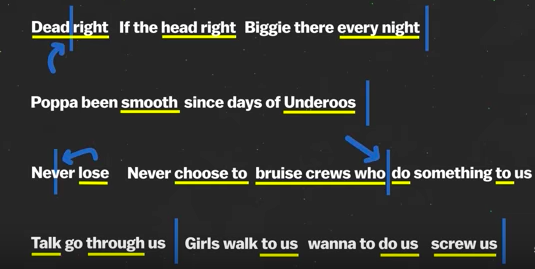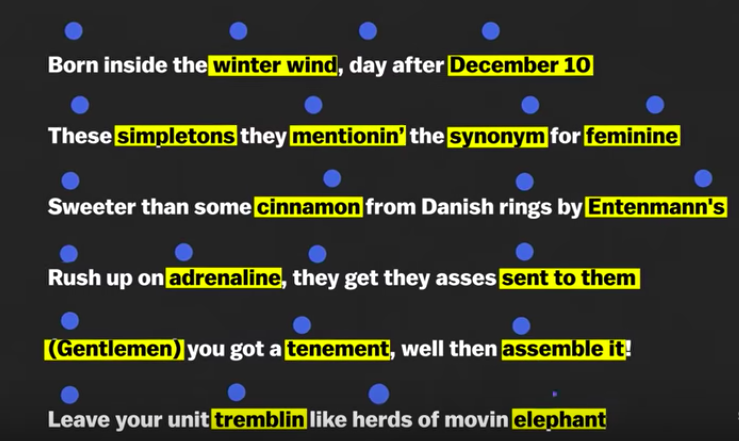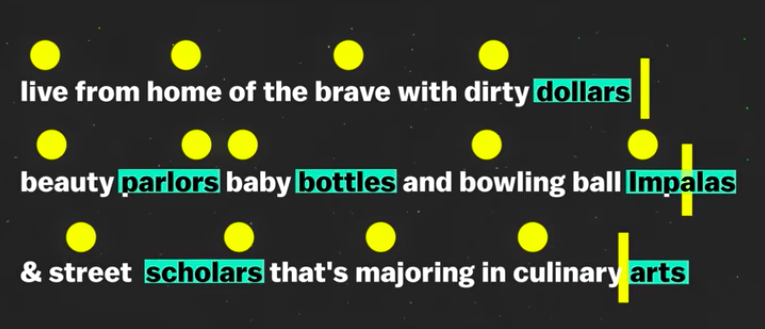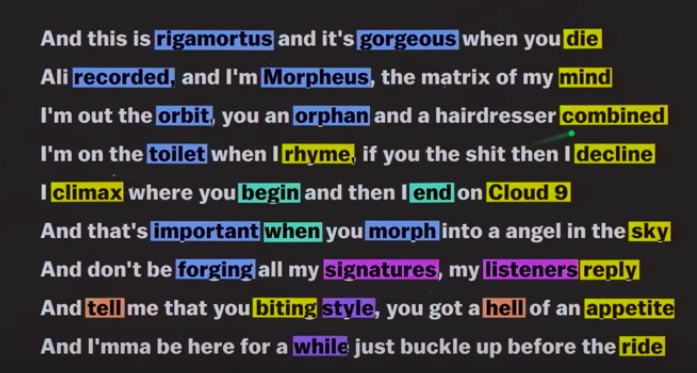Same as it ever was
Same as it ever was
Same as it ever was
…until you isolate the vocal tracks, above.
Talking Heads’ Afrobeat-inflected “Once In A Lifetime ” has become one of the band’s most iconic numbers. Even casual fans are prone to aping lead singer David Byrne’s shouty, freaked out preacher man delivery, a style born of experiments in human sampling, and cowriter Brian Eno’s interest in early hip hop, Nigerian musician Fela Kuti, and combining multiple rhythmic elements in a single song.
Byrne insists that the infectious lyrics are not a critique of consumerism, as is popularly believed. Instead, he explains, they’re about mindfulness and the unconscious:
We operate half-awake or on autopilot and end up, whatever, with a house and family and job and everything else, and we haven’t really stopped to ask ourselves, “How did I get here?”
Cut loose from the bass, guitar, keyboards and drums, the lyrics seem less like semi-improvisational art-geek constructions than the semi-sinister ramblings of a self-styled holy man, maybe the wild-eyed preacher character Byrne channels in the original video below.
People who’ve listened to the stripped down version online gather in the comments section like friends comparing notes near the exit of a haunted house:
I feel like David Byrne is holding me at gunpoint and yelling at me in an abandoned warehouse.
This sounds like David Byrne is lost alone in a cave and shouting nonsense into the darkness.
It’s like hearing a cult somewhere in a cavern.
This sounds like something you’d hear before being murdered??
Readers, what associations do you have with this song, and where do you find yourself after listening to it sans orchestration?
And you may find yourself
Living in a shotgun shack
And you may find yourself
In another part of the world
And you may find yourself
Behind the wheel of a large automobile
And you may find yourself in a beautiful house
With a beautiful wife
And you may ask yourself, well
How did I get here?
Letting the days go by, let the water hold me down
Letting the days go by, water flowing underground
Into the blue again after the money’s gone
Once in a lifetime, water flowing underground
And you may ask yourself
How do I work this?
And you may ask yourself
Where is that large automobile?
And you may tell yourself
This is not my beautiful house!
And you may tell yourself
This is not my beautiful wife!
Letting the days go by, let the water hold me down
Letting the days go by, water flowing underground
Into the blue again after the money’s gone
Once in a lifetime, water flowing underground
Same as it ever was
Same as it ever was
Same as it ever was
Same as it ever was
Same as it ever was
Same as it ever was
Same as it ever was
Same as it ever was
Water dissolving and water removing
There is water at the bottom of the ocean
Under the water, carry the water
Remove the water at the bottom of the ocean!
Letting the days go by, let the water hold me down
Letting the days go by, water flowing underground
Into the blue again in the silent water
Under the rocks, and stones there is water underground
Letting the days go by, let the water hold me down
Letting the days go by, water flowing underground
Into the blue again after the money’s gone
Once in a lifetime, water flowing underground
And you may ask yourself
What is that beautiful house?
And you may ask yourself
Where does that highway go to?
And you may ask yourself
Am I right? Am I wrong?
And you may say to yourself, “My God! What have I done?”
Letting the days go by, let the water hold me down
Letting the days go by, water flowing underground
Into the blue again in to the silent water
Under the rocks and stones, there is water underground
Letting the days go by, let the water hold me down
Letting the days go by, water flowing underground
Into the blue again after the money’s gone
Once in a lifetime, water flowing underground
Same as it ever was
Same as it ever was
Same as it ever was
Look where my hand was
Time isn’t holding up
Time isn’t after us
Same as it ever was
Same as it ever was
Same as it ever was
Same as it ever was
Same as it ever was
Same as it ever was
Same as it ever was
Same as it ever was
Same as it ever was
Letting the days go by (same as it ever was)
Letting the days go by (same as it ever was)
Once in a lifetime
Letting the days go by
Letting the days go by
via Dangerous Minds
Related Content:
Talking Heads Perform The Ramones’ “I Wanna Be Your Boyfriend” Live in 1977 (and How the Bands Got Their Start Together)
Talking Heads Featured on The South Bank Show in 1979: How the Groundbreaking New Wave Band Made Normality Strange Again
Talking Heads’ “This Must Be the Place (Naive Melody)” Performed on Traditional Chinese Instruments
Ayun Halliday is an author, illustrator, theater maker and Chief Primatologist of the East Village Inky zine. Join her in NYC on Thursday June 28 for another monthly installment of her book-based variety show, Necromancers of the Public Domain. Follow her @AyunHalliday.








